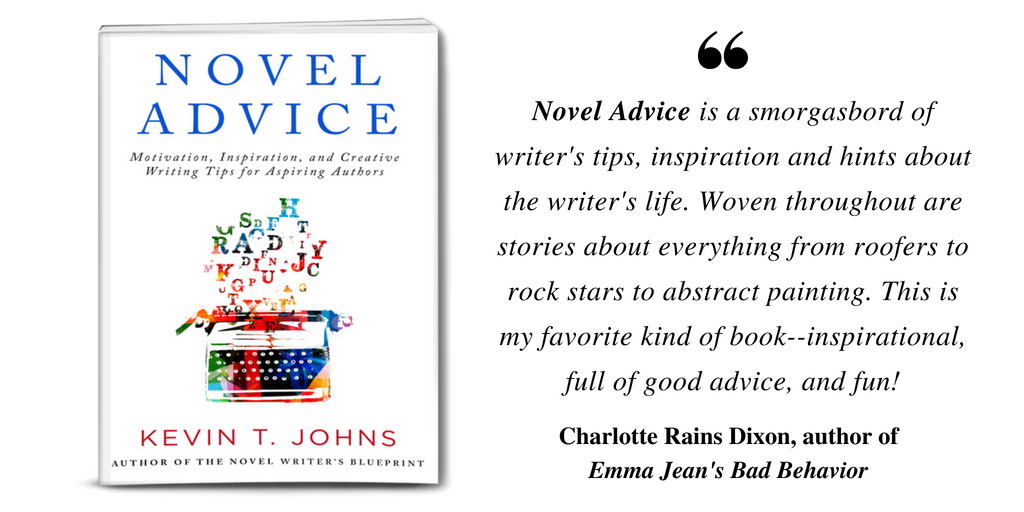How’s your work-in-progress coming along?
Is your current approach to writing getting you the best results possible?
Are you writing quicker these days, or are you slowing down?
When will the book be done?
Let’s face it . . . Answering these questions will be next to impossible if you aren’t tracking progress in some manner.
The inability to answer these questions is exactly why so many aspiring novelists spend years working on their first book. Without tracking methodologies, they have no means of optimizing work habits.
A clear understanding of whether you’re making positive gains in your novel writing requires the establishment of three things:
- A Goal – What are you trying to achieve?
- A Deadline – When are you going to achieve that goal?
- Performance Indicator(s) – What metrics are you going to measure to track progress towards the goal and deadline?
Here’s an example of how these three factors can work together:
A writer would say to themselves, I’m going to write a 50,000 word first draft of my manuscript (Goal) by three months from now (Deadline), and I’m going to record my daily word count after each writing session (Performance Indicator).
With these three factors in place, the writer can now perform a quick equation:
A (total word count goal) divided by B (total number of days to deadline) equals X (daily word count requirement, i.e. performance indicator),
In other words: 50,000 / 90 = 556
The writer now knows they need to write 556 words a day to reach their goal and deadline. If they aren’t writing at that pace, something needs to change.
Perhaps the deadline isn’t realistic. Perhaps the word count goal was too ambitious. Maybe some tweaks need to be made to their writing schedule and drafting habits.
The point is you can’t identify problems and then make course corrections if you aren’t tracking progress in the first place, so here’s 4 ways you can track your writing progress.
1. Word Count
As demonstrated in the above example, tracking word counts is, perhaps, the most obvious and potentially effective way to track your novel writing progress.
If you’ve ever participated in National Novel Writing Month (NaNoWriMo), you know just how magical and motivating that 1700-words-a-day goal can be!
Your daily word tracking can be done in a spreadsheet, on a wall calendar, or by utilizing an in-app feature in writing programs like Scrivener. How you record the count isn’t as important as the fact that you have tracked it in such a manner as to support the regular monitoring and analysis of trends.
In his popular nonfiction book, On Writing, Stephen King explains how he uses the word count method, with a goal of writing 2000 words every day.
If it works for the King, it’ll likely work for you too.
2. Hours Worked
Another lesson many a NaNoWriMo veteran has learned is that a relentless focus on word count alone can potentially result in some pretty poor writing. That’s why some writer’s prefer to focus on tracking hours worked as opposed to a specific word count.
For example, let’s take a measure like 3 hours of writing each day. Some days you may be rocking and rolling and get down 3000 words during that time box. Other days you may be crafting a particularly difficult scene, or not feeling at your best, and only get 500 words down in that same amount of time.
No problem.
The point isn’t the quantity of words, but rather the consistency and habit formation that comes from establishing a dedicated block of time that you relentlessly adhere to on a regular basis.
My favourite tool for keeping track of my work time, especially while juggling multiple projects, is Toggl.com. Toggl allows you to easily set up projects, record the time you’re dedicating to each one, and then review the statistics in helpful graphs and reports.
3. Daily Streaks
If word count or tracking of hours is a little too regimented or analytical for your tastes, you might prefer the streak method, also known as the “Seinfeld Strategy.”
This approach involves focusing on performing a task (in our case writing) on a daily basis and then trying to string together an unbroken streak of as many days in a row as possible.
Visual representations of success can be motivating for this approach. Try putting Xs or stickers on a wall calendar or the recording your achievement in a simple Google or Excel spreadsheet.
The major differentiator here is you’re not measuring amounts of time or number of words per day, but rather your overall consistency of effort and focus during a longer timeframe on the scale of weeks and months.
The daily streak method is all about consistency; you’re making sure each and every day you’re doing some work on your manuscript.
While this approach may sound somewhat laissez-faire to a more productivity-minded author, I’ve found the #1 secret to being a prolific author is simple consistency over the long haul.
4. Drafts
As discussed earlier, word count goals are perhaps the best and easiest way to track progress during the drafting stage of a novel. But once a first draft is complete, word count becomes a much less helpful metric.
Tracking hours worked at the revisions stage can also become problematic because the number of hours spent revising a scene says little about whether it’s actually any closer to completion.
The revision stage is, therefore, a time when an emphasis on drafts and deadlines becomes particularly helpful.
My own approach for the revision stage is to spend one day revising each chapter. This curtails the potentially endless and open-ended nature of the revisions process. At the end of the work day, the draft of the scene is done. It’s time to move onto the next scene, no matter what.
If there’s still work to be done, it will need to wait until my next sweep through the manuscript.
With this approach and a novel of about 60 scenes, I know it’ll take me two months to revise each draft, and I can plan my projects and monitor my progress accordingly.
—
Different authors will prefer one tracking methodology and indicator over another, and varying stages in a project will also require alternate approaches.
The core requirements, however, remain the same: figure out your goal, set a deadline, and then, with the help of the four methods discussed in this article, decide how to measure your progress.
So with that in mind, answer me this question:
How’s your work-in-progress coming along?
—
Enjoy this article? If so, you’ll love my book Novel Advice: Motivation, Inspiration, and Creative Writing Tips for Aspiring Authors. Grab a FREE copy by clicking the image below:


